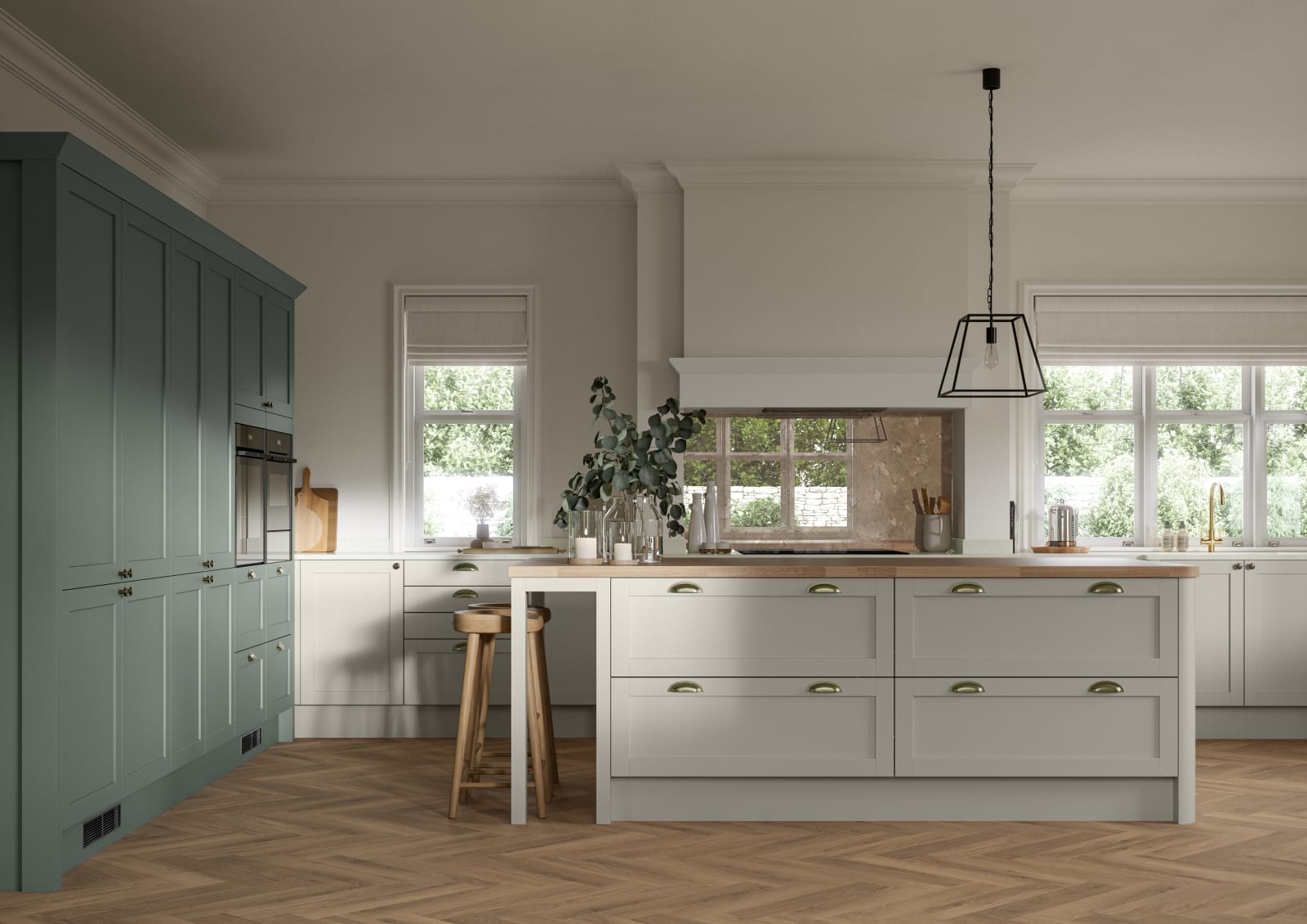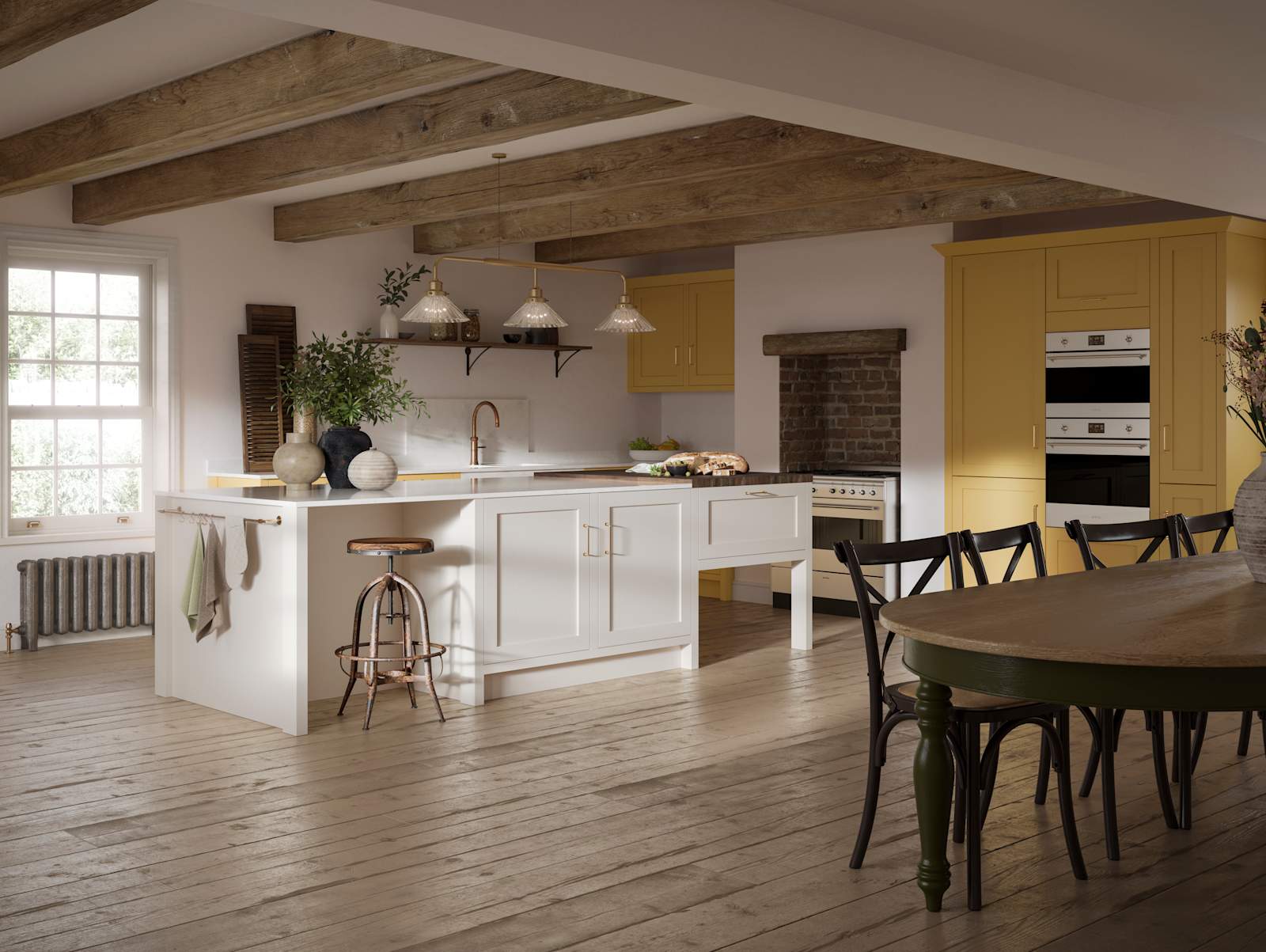Sustainable kitchens: Eco-friendly materials and appliance choices
Today's sustainable kitchen seamlessly combines environmental responsibility with appealing aesthetics and exceptional functionality. The result is a space that serves both your needs and the planet's future.
Creating an eco-conscious kitchen is both a practical and ethical choice. Discover how to develop a kitchen that minimises environmental impact while maximising design potential.

Nordic Craft kitchen island in Hoxton Sumi Black kitchen
Why sustainable kitchens matter
The kitchen typically consumes significant energy and produces more waste than any other room in your home.
With thoughtful material selection and efficient appliances, you can significantly reduce this environmental footprint while creating a space that still serves its purpose and looks beautiful too.
What’s more, the benefits extend beyond environmental impact. Sustainable choices often also result in healthier living spaces, and reduced utility costs over time.
Eco-friendly worktops
The kitchen worktop presents an excellent opportunity for meaningful sustainability impact. Recycled materials repurpose potential waste into eye-catching surfaces – recycled glass creates distinctive terrazzo patterns with visual depth, while compressed paper composite offers durability comparable to traditional stone.

Integra Dunham kitchen with white marbled worktop

FSC timber worktop with white sink and steel tap
Sustainable options also extend beyond recycled materials. Responsibly harvested solid wood worktops provide natural warmth while functioning as carbon storage throughout their lifespan. FSC certification ensures your timber originates from forests managed according to strict environmental standards. Bamboo presents another renewable alternative, reaching maturity significantly faster than traditional hardwoods.
For those interested in innovative solutions, bio-glass manufactured using low-energy processes offers an environmentally conscious alternative to conventional glass surfaces.
These environmentally responsible surfaces deliver performance equal to conventional materials. Most eco-friendly worktops also demonstrate excellent resistance to stains, scratches and heat.
Sustainable cabinetry
Your cabinet choices can make a significant environmental impact without sacrificing style. When it comes to sustainability, bamboo cabinets lead the pack in renewability. Bamboo grass grows up to 91 cm per day, compared to decades for traditional hardwoods. Its extensive root systems prevent soil erosion, and it absorbs more carbon dioxide than equivalent timber forests.

Nordic Nature cabinets with matt black tap

Nordic Craft kitchen island in Mindful world kitchen
For the traditionalists, FSC-certified wood ensures your cabinets come from forests managed with ecological sensitivity. Look for manufacturers using water-based finishes and formaldehyde-free adhesives for truly clean cabinetry. Reclaimed timber offers another planet-friendly option, bringing character and history to your kitchen.
Beyond wood, consider cabinets made from agricultural waste combined with non-toxic resins. These innovative materials divert farm by-products from landfill while creating surprisingly beautiful and durable surfaces.
Whichever material you choose, look for quality construction that ensures longevity. The most sustainable cabinet is one you won't need to replace for decades.
Environmentally-friendly flooring
Sustainable wood flooring offers exceptional environmental benefits while providing warmth and character. Many species, including oak and walnut, are available with FSC certification. Engineered wood flooring offers another responsible option, using significantly less hardwood while providing comparable durability and appearance.

Ambleside kitchen with herringbone wood flooring

Wardley kitchen with wood floors, decorations and furniture
Reclaimed timber presents perhaps the most environmentally beneficial wood option. These materials redirect valuable resources from landfill while bringing distinctive character and historical context to your kitchen.
Beyond traditional wood, cork provides an innovative sustainable alternative. Harvested from living cork oak trees without causing damage, this material offers natural cushioning, sound absorption, and antimicrobial properties. Similarly, bamboo flooring delivers exceptional hardness and durability while coming from a rapidly renewable resource.
Appliances: Energy-efficient power players
Modern eco-friendly appliances use much less energy than their predecessors while delivering superior performance. Look for A+++ ratings on everything from refrigerators to dishwashers. These energy champions can significantly reduce your kitchen's electricity consumption compared to older models.
Induction hobs heat food faster while using less energy than traditional electric or gas cooktops. They're precise too, giving you perfect temperature control for culinary masterpieces. Safety bonus: the surface stays cool except where your pot makes contact. No more burnt fingertips.

Nordic Nature kitchen with induction hob on marbled worktop

Man emptying dishwasher in Nordic Craft kitchen
Water wisdom
Low-flow taps reduce water consumption without compromising performance. Some smart models even allow you to preset exact water volumes – perfect for recipes that call for specific amounts.
Dishwashers have also come a long way in water efficiency. The latest models use as little as 6 litres per cycle, compared to up to 10x that amount you might use washing by hand.
Beyond the hardware: Habits that help
Resource conservation
Motion-sensor taps prevent water waste from absent-minded moments. LED lighting uses a fraction of the energy of traditional bulbs while lasting years longer. Smart systems that turn off appliances when not in use eliminate phantom power drain.

Smart AEG kitchen appliances in tall Nordic Nature cabinets

Pull-out bins for waste sorting in Hoxton Sumi Black cabinet in Mindful World kitchen
Waste reduction
Incorporate dedicated recycling and composting stations directly into your kitchen design. Pull-out bins with multiple compartments make sorting waste effortless, while sleek compost containers transform food scraps into garden goodness.
Also consider a built-in water filtration system to eliminate plastic bottle waste. Some advanced models can even provide sparkling water, giving you café-quality refreshment without the environmental baggage of store-bought bottles.
These small tweaks add up to significant resource savings over your kitchen's lifetime.




























